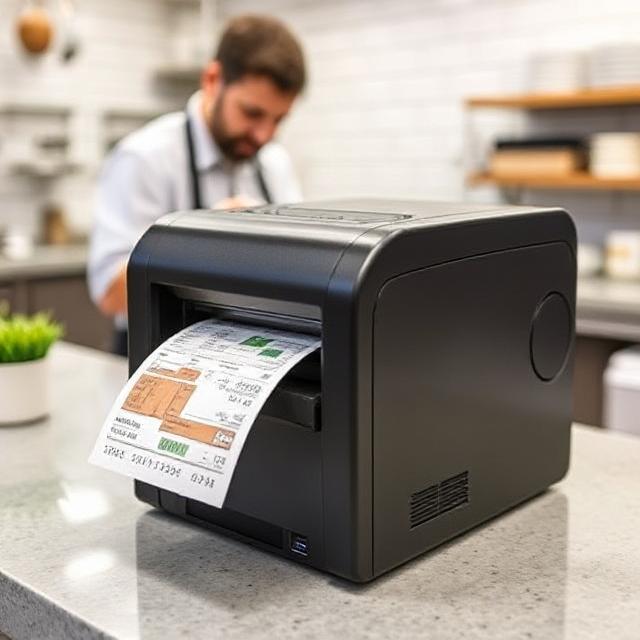In the fast-paced environment of restaurants and commercial kitchens, efficiency is key to ensuring smooth operations and customer satisfaction. One of the most impactful tools in modern kitchens is the thermal printer, which significantly enhances order accuracy, speed, and workflow. Unlike traditional printers that use ink or toner, thermal printers generate high-quality prints quickly and silently, making them ideal for busy kitchens.

1. Faster Order Processing
Thermal printers receive orders directly from the DinePlan Point of Sale (POS) system and print them instantly, eliminating delays caused by manual order taking. Since they don’t require ink or ribbons, there’s no need for frequent maintenance, reducing downtime. Orders are printed in seconds, ensuring that kitchen staff can start preparing meals immediately, leading to faster service and reduced wait times for customers.
2. Improved Order Accuracy
Handwritten tickets can be unclear or misinterpreted, leading to incorrect orders and customer dissatisfaction. Thermal printers produce clear, legible text and even custom formatting, such as bold headers or item modifiers (e.g., “no onions” or “extra spicy”). This reduces miscommunication between front-of-house staff and the kitchen, ensuring that every dish is prepared correctly the first time.
3. Reduced Paper Waste & Cost Savings
Traditional printers require ink cartridges or ribbons, which add ongoing costs. Thermal printers, on the other hand, use heat-sensitive paper, eliminating the need for expensive ink replacements. Additionally, many thermal printers support smaller paper sizes, reducing paper waste compared to larger receipt printers. Over time, this leads to significant cost savings for restaurant owners.
4. Silent & Reliable Operation
In a bustling kitchen, noise from dot-matrix or impact printers can be disruptive. Thermal printers operate silently, allowing staff to communicate more effectively without unnecessary distractions. Their simple design also means fewer mechanical parts that can fail, resulting in higher reliability and longer lifespan.
5. Seamless Integration with POS Systems
Modern thermal printers easily integrate with POS systems, kitchen display systems (KDS), and online ordering platforms. Orders from dine-in, takeout, or delivery services are automatically sent to the kitchen printer, streamlining operations. Some advanced models even support wireless connectivity, allowing for flexible placement in the kitchen.
6. Enhanced Organization with Multiple Printers
Large restaurants can use multiple thermal printers for different stations (e.g., grill, salad, bar) to ensure orders reach the right team instantly. This prevents bottlenecks and helps staff prioritize orders more efficiently, especially during peak hours.
Conclusion
Thermal printers have revolutionized kitchen operations by speeding up order processing, improving accuracy, reducing costs, and enhancing workflow efficiency. For restaurants looking to optimize their kitchen performance, investing in a high-quality thermal printer is a smart choice that pays off in improved service and customer satisfaction.
By adopting this technology, kitchens can reduce errors, save time, and operate more smoothly, ultimately leading to a better dining experience for customers and a more efficient workplace for staff.
Would you like recommendations on the best thermal printers for restaurants? Let us know in the comments!
This blog is optimized for restaurant owners, kitchen managers, and hospitality professionals looking to improve their order management system. Let me know if you’d like any modifications!
Thermal Printers Improve Kitchen Order Efficiency
- Unlocking Benefits and Efficiency of Using a POS System in Your Retail Shop
- How Cafés and Coffee Shops in Pakistan Manage Operations with DinePlan POS Software
- How to Run a Restaurant Without Losing Your Mind
- Top Features to Look for in Your Restaurant DinePlan POS Software
- How Thermal Printers Improve Kitchen Order Efficiency
